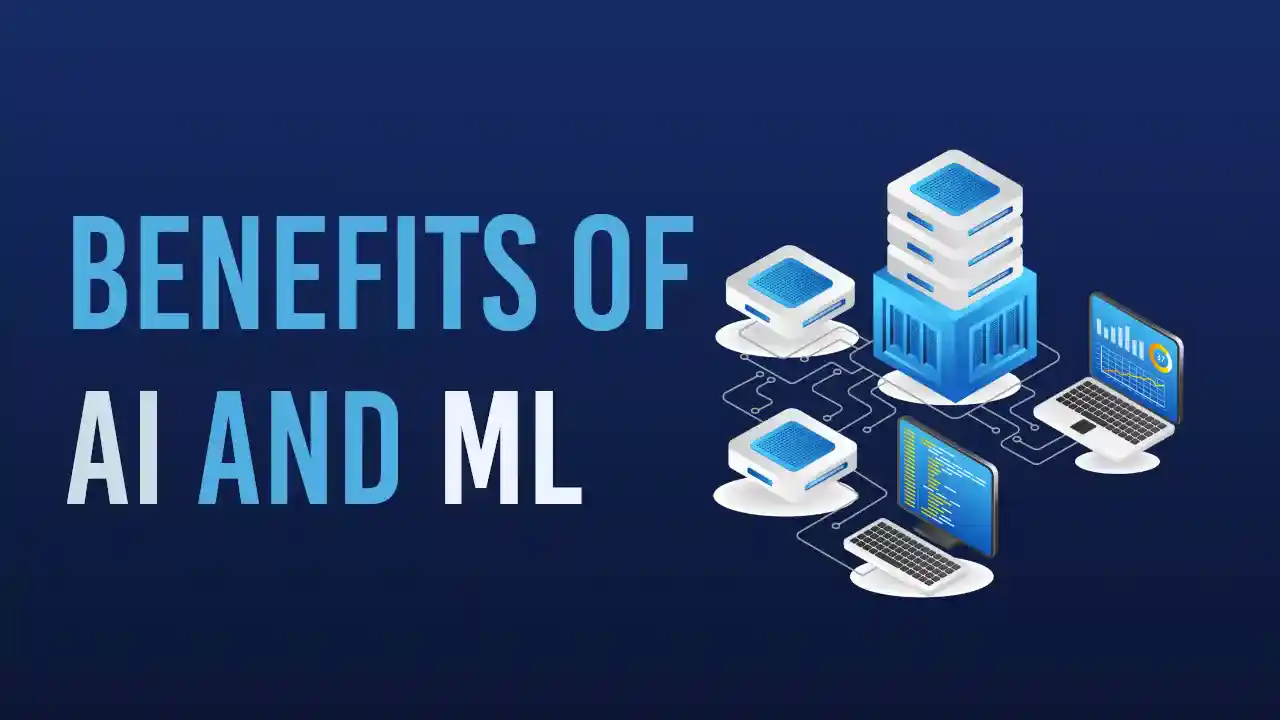Artificial intelligence (AI) and Machine learning are advanced technologies playing a role in transforming many industries, including telecommunication. Integrating ML and AI into the telecommunication industry has opened innovative ways to improve customer experience, optimize network operations and increase efficiency.
It also helps you reduce the burden on your IT teams, and your team can accomplish more goals in less time.
You may have heard about AI and ML but do not know what they are and how they are integrated with telecommunications.
To help you understand these advanced technologies, here in this article, we will discuss the role of AI and ML in telecommunications, the limitations and challenges they face, and the future of the AI and ML industry.
Brief History Of AI And ML In Telecommunication

Machine learning and Artificial intelligence have a long history in telecommunications, with their early application dating back to the 1990s. However, with the emergence of advanced algorithms and increased computational power, AI and ML are now used in many new ways in the telecommunications industry.
What Is Artificial Intelligence?
Artificial intelligence, or AI, is a branch of computer science that enables machines to perform tasks that usually require human intelligence, such as speech recognition, visual perception, and decision-making.
AI generally works by ingesting a large amount of labeled training data and analyzing the data for correlations and patterns. Then it uses these patterns to predict future states.
This way, a chatbot trained with examples of text chats can produce lifelike exchanges with people, and an image recognition tool is trained to identify objects in images.
What Is Machine Learning?
Machine Learning is a branch of artificial intelligence that focuses on developing statistical models and algorithms that allow computers to learn without explicitly being programmed. And it is referred to as AI model learning.
It is important because it helps telecommunication and other industries view trends in customers’ behavior and operational patterns and supports the development of new products.
Why Are AI And ML Important In Telecommunication?
The importance of such technologies in the telecommunications industry lies in their ability to automate repetitive tasks, improve network operations and enhance customer satisfaction. With ML and AI, telecommunication companies can manage their networks, resolve issues quickly and provide better customer support.
How AI and ML Are Revolutionizing Telecommunications?
In a world where customers highly demand top-quality products and services, communication service providers are moving towards artificial intelligence and machine learning to meet the expectations of their customers.
Here we describe the three most significant ways ML and AI are revolutionizing the telecom sector.
1. Network Optimization And Automation
Advanced communication networks are challenging and complicated to manage. With the introduction of the 5G network, these parameters are becoming more difficult. However, deploying ML and other technologies, such as SDN, can help network operators have advanced automation in their network operations to improve management, control, and optimize network architecture.
AI and ML systems can predict and identify potential network-related issues and help fix these issues using network and device data.
AI and ML use different parameters collected from customers, their devices, complaints, and service logs for analysis and help telecoms to find performance issues in different time zones, locations, and demographics.
2. Customer Service And Operational Support
Customer support is always of great importance in telecom companies. These companies often make it challenging for users to access their customer support platforms, such as phone numbers and online forms, to reduce complaints. Even if any customer is lucky enough to connect with a customer care representative, they usually do not get the assistance they seek.
The challenges of customer support start with having limited staff dealing with chats and phones compared to a large number of customer complaints and requirements.
Using ML-based chatbots, telecom companies can easily solve this problem. These chatbots are available 24/7 and can help customers get quick access to the information they need.
Furthermore, you can improve your customer service by using NLP-based chatbots, which can interpret the meaning of your customer’s words. For example, by using customers’ tone and word choice, this bot can determine if the customer is happy or frustrated.
Modern chatbots also use NLP and machine learning algorithms to analyze server ticketing data, networking logs, historical information, and real-time customer input to solve customer problems and deliver an amazing customer experience.
ML-based chatbots are also playing a role in on-site maintenance and cutting back on business costs by reducing the need for technical visits.
3. Predictive Maintenance
Predictive maintenance is another area where machine learning and artificial intelligence are helping telecom companies by improving the quality and reliability of service. Companies can use sophisticated machine learning algorithms to predict future results from historical data.
AI systems can then use different data-driven techniques to monitor the condition of equipment and predict possible failure depending on previous patterns.
With the help of this information, telecommunication companies can take proactive action to fix issues and provide high-quality service to their customers.
In addition, telecoms can use the capabilities of machine learning and AI across hardware, neural networks, cloud, and open-source frameworks. Ultimately providing their customers with a more stable and reliable network that improves customer retention and experience.
4. Fraud Detection And Prevention
Another important application of artificial intelligence in telecommunication is the prevention of fraud. To detect and prevent fraud, AI algorithms can analyze data from different sources, such as billing data, call records, and network logs. It helps telecoms to protect their customers and revenue streams.
5. AI And ML In 5G and Beyond
Last but not the least, AI and ML are critical components in the development of the 5G network and beyond. Artificial intelligence algorithms are used to optimize the performance of 5G networks. It makes sure that these networks can provide high-speed and low-latency connectivity to meet the needs of advanced applications.
Benefits Of AI And ML For Telecommunication

If you are still not convinced why AI and ML are integral to your telecommunication strategy, read the following benefits that you can get by doing so:
- Consider the large amount of data generated by the telecom industry and the need of every company to reduce operating costs. Artificial intelligence allows you to manage your data and data source in real time without spending money on data processing positions.
- Another major issue that exists in the telecommunication industry is the maintenance of mobile tower operations. Instead of having a team for twenty-four hours of maintenance of mobile towers, you can deploy AI and ML to notify engineers about problems that need to be solved before they become worse.
- With an emerging need for better customer relationships, artificial intelligence can help telecoms to use virtual assistants to manage customer engagement.
- It is important to remember that predictive analytics can help you beyond hardware and software maintenance. Marketing teams in telecommunications will be thankful to AI as it can automate market segmentation, make valuable predictions, and help in many other parts of the lead generation process.
Challenges And Limitations Of AI And ML In Telecommunications
Despite having pressing reasons to adopt artificial intelligence and machine learning, telecommunication companies face several limitations and challenges, some of which are as follows:
Lack Of Standardization
One of the most significant challenges is the lack of standardization and interoperability. AI and ML technologies use different data formats, communication protocols, and algorithms, making it difficult to integrate these technologies into an existing system.
Data Privacy And Security Concerns
Data privacy and surety are also major issues related to using AI and ML in telecommunications. It is because AI algorithms usually process sensitive customer data, such as call records and billing information. It means there is a risk that this data can be stolen or misused.
Ethical Issues And Biases In AI Decision-Making
Another limitation or issue is the possibility of bias in AI decision-making. AI algorithms are as good as the data they are trained on and keep in mind if that data is biased, the results you get can also be biased.
It may result in unfair treatment of certain customers, and it is essential to address this issue when developing AI algorithms in the telecommunications industry.
Challenges in the Implementation Of AI And ML
Implementing machine learning at a large scale can be challenging for telecommunication companies. Integrating AI and ML into existing systems can be time-consuming and complex, and it also needs a significant investment in resources and technology.
Furthermore, there is a shortage of AI and ML professionals, which makes it more difficult for companies to implement AI ML solutions.
Future Of AI And ML In Telecommunications

The future of AI and ML in telecommunication is bright, and the demand will continue to increase over time. With the continued advancement in these technologies, we expect to see new applications that will further revolutionize the industry.
Emerging trends such as the Internet of Things (IoT), edge computing, and 5G networks provide new ways to integrate AI and ML into the telecom industry. For example, AI algorithms can optimize the performance of edge computing, decision-making, and real-time processing at the network’s edge.
The impact of AI and ML on the telecommunication industry will be significant. It helps reduce operational costs, improve customer experience, and improve network performance, thus leading to increased efficiency and competitiveness in the industry.
In addition, these technologies can potentially transform how we live, work and communicate.
Conclusion - Artificial Intelligence and Machine Learning
In conclusion, AI and ML have already significantly impacted the telecommunications industry, and we can expect to see this trend continue in the future.
With their ability to automate routine tasks, improve network operations, and enhance the customer experience, AI and ML can potentially transform the industry in many positive ways.
However, it is important to address the challenges and limitations of AI and ML in telecommunications, including data privacy and security, ethical issues, and bias in AI decision-making, to ensure that these technologies are used equitably and responsibly.




